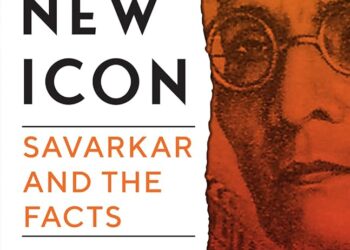The author says that the improvement in human development metrics has been significant in the Southern States in the last 75 years, placing them closer to other emerging economies.
– Lokeshwarri SK
The unrest among the opposition-ruled States over the high-handed manner in which the NDA government has been formulating policies that have been giving more power to the Centre has been growing in recent times. Some of the State Finance Ministers have been repeatedly highlighting the manner in which the federal structure of the country is getting increasingly centralised and revenue sharing is biased towards the more populous states.
The book, South vs North, India’s Great Divide, written by Nilakantan RS, takes this discussion forward by summing all the arguments that the opposition-ruled States, particularly Tamil Nadu, have against the Centre’s federal policies. Anyone who wants to understand this debate and the contentious points in the power-sharing between the constituents of the Indian Union will find this book quite useful.
The book shows with numbers how the share of tax revenue of Southern States has declined over the years since the devolution formula is weighed in favour of the more populous states. The drop in rate of population growth is making it difficult for the Southern States in getting adequate share from the tax revenue pool.
The author tries to establish with the help of data how Southern States have scored much better than others in health, education and economic growth. He also makes some valid points about the inequity in revenue sharing between Centre and the States and how the more prosperous States are being short-changed in the revenue sharing formula.
While the book is quite insightful, the partisan slant in the narrative rankles. Making the book about North vs South was unnecessary, as it kindles polarising sentiments. In fact, much of the data presented by the author shows that States such as Maharashtra, Gujarat, Haryana and Himachal Pradesh have performed reasonably well in many economic and social parameters though they are not located in South India. The book could well have been about Tamil Nadu’s performance alone.
Factors behind the divide
That said, the analysis presented to understand the diverging performance between States is quite insightful.
The author points out that when the country attained Independence, all States were in similar straits. But the improvement in human development metrics has been significant in the Southern States in the last 75 years, placing them closer to other emerging economies. Many of the States in rest of India have shown much lesser development, closer to Sub-Saharan countries.
The author says that this development in the Southern States could be due to sub-nationalism, which in turn is linked to linguistic identity. Some policies such as mid-day meal schemes, public distribution of basic food items and general stress on educating people, particularly women, has helped improve health and economic metrics as well.
“Still others have cited cultural and anthropological reasons and practices, such as marriage among cousins – where a woman who marries into her extended family has slightly more agency than a woman married into a home outside her family network. Economists also cite better access to sea.”
Population dynamics
The author’s views on how population divergence is becoming a boon as well as bane for Southern States is also quite valid.
He writes that the growth in population between 1971 and 2011 in Tamil Nadu was 75 per cent, while it was 56 per cent in Kerala. States such as Rajasthan, Haryana, Bihar and Madhya Pradesh, however, increased their population between 142 to 166 per cent in the same period. The Total Fertility Rate (TFR) is also much lower in Tamil Nadu and Kerala, while the female literacy rate is much higher in these States. On the contrary, States like Uttar Pradesh, Rajasthan, Madhya Pradesh and Jharkhand have the highest female illiteracy rate and also higher TFR.
Problems in revenue sharing
The book shows with numbers how the share of tax revenue of Southern States has declined over the years since the devolution formula is weighed in favour of the more populous states. The drop in rate of population growth is making it difficult for the Southern States in getting adequate share from the tax revenue pool.
The formula used by the Finance Commission for sharing revenue among States is tilted in favour of the more populous states.
“The twist lies in what the Finance Commission has used for calculating demographic performance. It has taken the inverse of TFR in 2011 and multiplied it with the population figure for 1971. In other words, the parameter which was explicitly supposed to be about population control has been scaled against absolute population figures.”
This is resulting in States such as Tamil Nadu, Kerala, Karnataka, Gujarat and Telangana receiving far lesser revenue transfer from the Centre, making them increase their own taxes. On the other hand, States such as Bihar received six times their own tax revenue as transfers from the Centre.
While the book espouses all that the current DMK government in Tamil Nadu has been saying, it makes some valid points on the problems with the Indian Union. Remedial action will be needed on these issues soon.
(Courtesy: The Hindu – Businessline)






